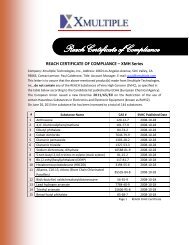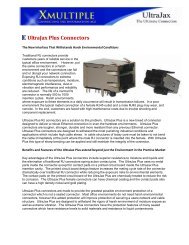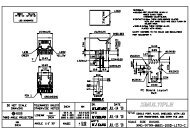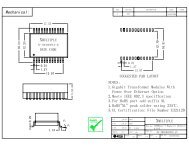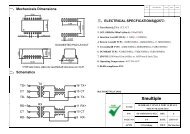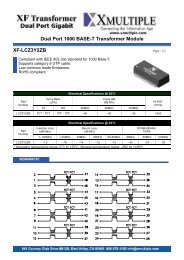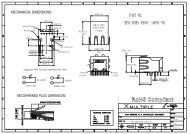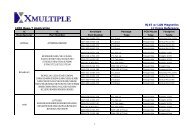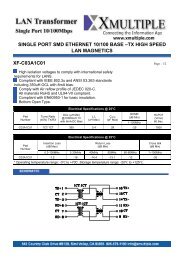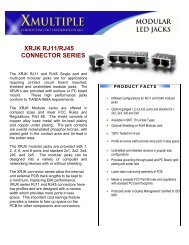Create successful ePaper yourself
Turn your PDF publications into a flip-book with our unique Google optimized e-Paper software.
<strong>10GB</strong> <strong>RoadMap</strong><br />
1) Preserve the 802.3/Ethernet frame format at the MAC Client service interface.<br />
• Meet 802 Functional Requirements, with the possible exception of Hamming Distance.<br />
• Preserve minimum and maximum FrameSize of current 802.3 Std.<br />
• Support full-duplex operation only.<br />
• Support star-wired local area networks using point-to-point links and structured cabling<br />
topologies.<br />
• Specify an optional Media Independent Interface (MII).<br />
• Support proposed standard P802.3ad (Link Aggregation)<br />
• Support a speed of 10.000 Gb/s at the MAC/PLS service interface<br />
2) Define two families of PHYs<br />
<br />
<br />
a LAN PHY, operating at a data rate of 10.000 Gb/s<br />
a WAN PHY, operating at a data rate compatible with the payload rate of OC-<br />
192c/SDH VC-4-64c<br />
3) Define a mechanism to adapt the MAC/PLS data rate to the data rate of the WAN<br />
PHY<br />
4) Provide Physical Layer specifications which support link distances of:<br />
<br />
<br />
<br />
<br />
<br />
at least 300 m over installed MMF (MultiMode Fiber)<br />
at least 65 m over MMF<br />
at least 2 km over SMF (SingleMode Fiber)<br />
at least 10 km over SMF<br />
at least 40 km over SMF<br />
5) Support fiber media selected from the second edition of ISO/IEC 11801 (802.3 to<br />
work with SC25/WG3 to develop appropriate specifications for any new fiber media).<br />
XGMII (X=10) 10 Gb Media Independent Interface<br />
Between the MAC and the PHY is the XGMII, or 10 Gigabit Media Independent Interface.<br />
The XGMII provides full duplex operation at a rate of 10 Gb/s between the MAC and PHY.<br />
Each direction is independent and contains a 32-bit data path, as well as clock and control<br />
signals. In total the interface is 74 bits wide.



